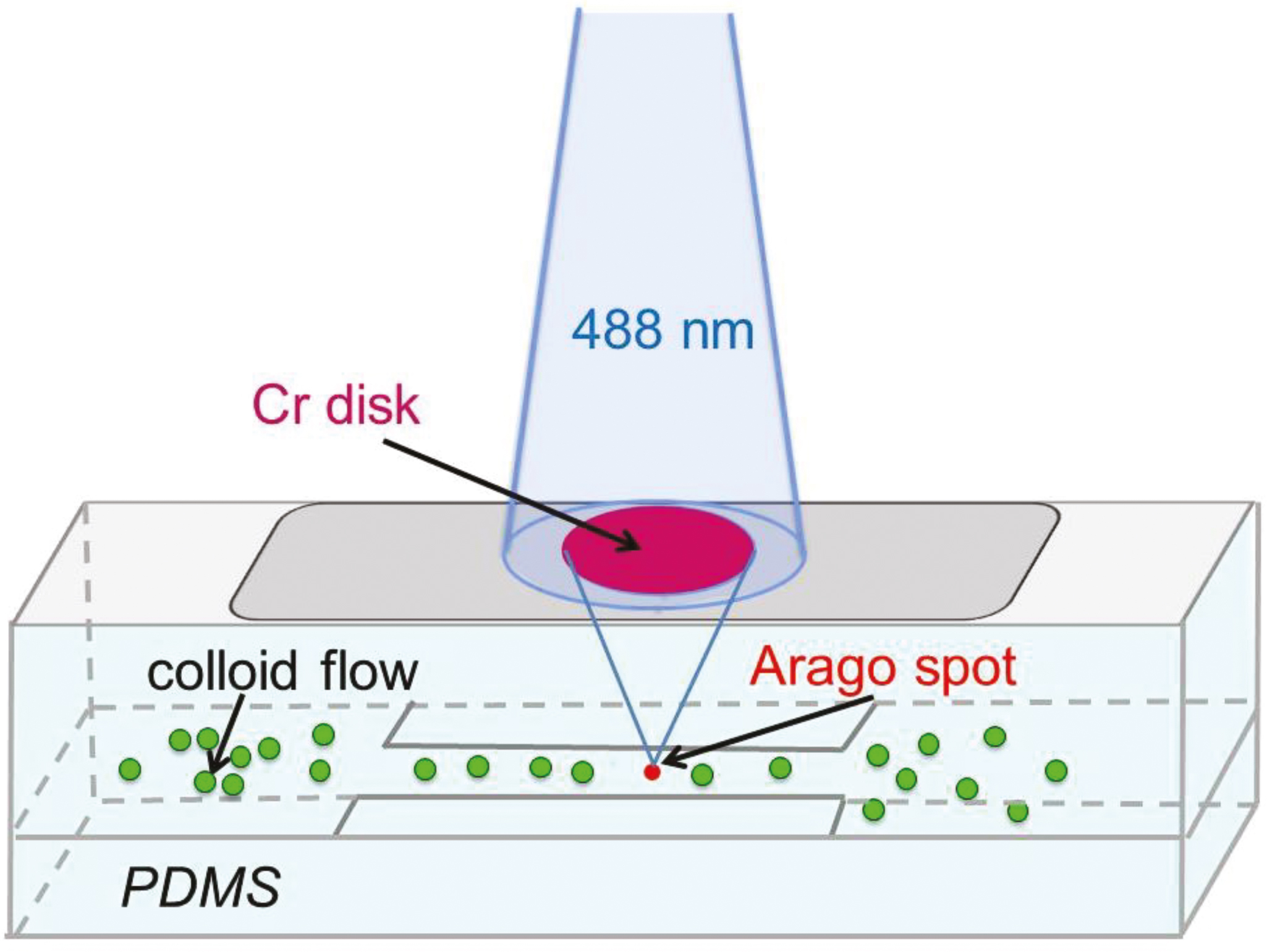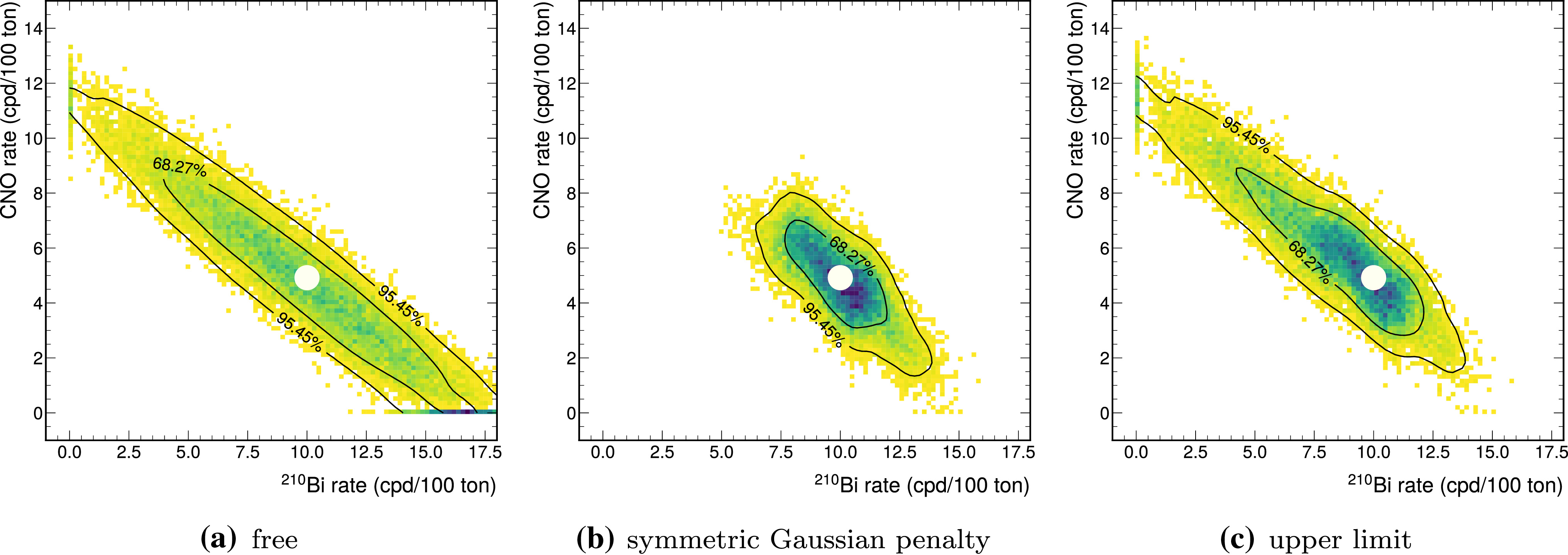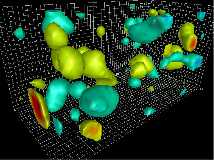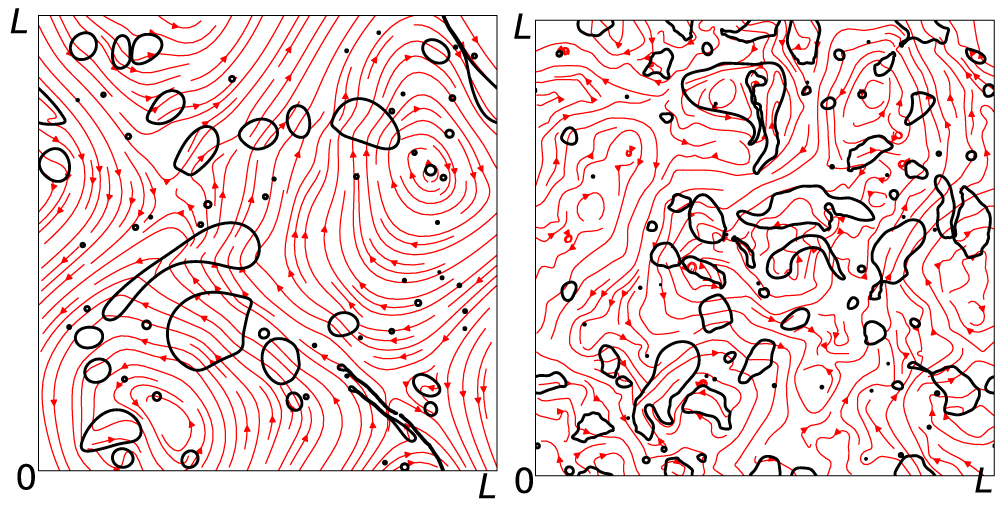News
EPJ D Highlight - Characterising cold fusion in 2D models
- Details
- Published on 15 December 2020

A new 2D modelling approach has been used to directly calculate how hydrogen nuclei fuse into helium after capturing muons
Progress towards ‘cold fusion,’ where nuclear fusion can occur at close to room temperatures, has now been at a standstill for decades. However, an increasing number of studies are now proposing that the reaction could be triggered more easily through a mechanism involving muons – elementary particles with the same charge as electrons, but with around 200 times their mass. Through a study published in EPJ D, researchers led by Francisco Caruso at the Brazilian Centre for Physical Research have shown theoretically how this process would unfold within 2D systems, without any need for approximations.
EPJ A Highlight - Automated symmetry adaption in nuclear many-body theory
- Details
- Published on 10 December 2020

The extreme cost of solving the A-nucleon Schrödinger equation can be minimized by leveraging rotational symmetry and, thus, enable the computation of observables in heavy nuclei and/or with high precision.
The associated reduction process, which amounts to re-expressing the working equations in terms of rotationally-invariant objects, requires lengthy symbolic manipulations of elaborate algebraic identities.
For the first time, this involved process is automated by a powerful graph-theory-based tool, the AMC code, which condenses months of error-prone derivations into a simple computational task performed within seconds.
The AMC program tightens the gap for a full automation of the many-body workflow, thereby lowering the time required to build and test novel quantum many-body formalisms.
EPJ E Highlight - Trapping nanoparticles with optical tweezers
- Details
- Published on 10 December 2020

By exploiting a particular property of light diffraction at the interface between a glass and a liquid, researchers have demonstrated the first optical tweezers capable of trapping nanoscale particles.
Optical tweezers are a rapidly growing technology, and have opened up a wide variety of research applications in recent years. The devices operate by trapping particles at the focal points of tightly focused laser beams, allowing researchers to manipulate the objects without any physical contact. So far, optical tweezers have been used to confine objects just micrometres across – yet there is now a growing desire amongst researchers to extend the technology to nanometre-scale particles. In new research published in EPJ E, Janine Emile and Olivier Emile at the University of Rennes, France, demonstrate a novel tweezer design, which enabled them to trap fluorescent particles just 200 nanometres across for the first time.
EPJ B Highlight - Predicting epilepsy from neural network models
- Details
- Published on 07 December 2020

Improved modelling techniques have enabled a group of researchers to better predict how damaging conditions in the brain can be triggered by complex dynamics in branching networks of neurons.
Within the staggeringly complex networks of neurons which make up our brains, electric currents display intricate dynamics in the electric currents they convey. To better understand how these networks behave, researchers in the past have developed models which aim to mimic their dynamics. In some rare circumstances, their results have indicated that ‘tipping points’ can occur, where the systems abruptly transition from one state to another: events now commonly thought to be associated with episodes of epilepsy. In a new study published in EPJ B, researchers led by Fahimeh Nazarimehr at the University of Technology, Tehran, Iran, show how these dangerous events can be better predicted by accounting for branches in networks of neurons.
EPJ B Colloquium - A colloquium on the variational method applied to excitons in 2D materials
- Details
- Published on 04 December 2020

Two-dimensional (2D) materials are condensed matter systems whose thickness varies from a single atom, as in graphene, to few atoms, as in transition metal dichalcogenides (TMDs). These exceedingly thin materials present, nevertheless, strong light-matter interaction.
EPJ D Highlight - Optimising laser-driven electron acceleration
- Details
- Published on 03 December 2020

A new paper examines how tuning aspects of a powerful laser beam can affect the acceleration of electrons, attempting to find the recipe for maximum net energy gain.
The interaction between lasers and matter is at the forefront of new investigations into fundamental physics as well as forming a potential bedrock for new technological innovations. One of the initiatives spearheading this investigation is the Extreme Light Infrastructure Nuclear Physics (ELI-NP) project. Here the project’s High-Power Laser System (HPLS) — the world’s most powerful laser—is just one of the tools driving electron acceleration with lasers, Direct Laser Acceleration (DLA). In a new paper published in EPJ D, Etele Molnár, ELI-NP, Bucharest, and co-authors study and review the characteristics of electron acceleration in a vacuum caused by the highest-power laser pulses achievable today looking for the key to maximum net energy gain.
EPJ C Highlight - Detecting solar neutrinos with the Borexino experiment
- Details
- Published on 03 December 2020

Neutrinos produced by the CNO cycle within the core of the Sun are being hunted by the Borexino experiment so that we may learn more about this important nuclear process.
Neutrinos are chargeless particles with about a mass about a millionth that of an electron that are created by the nuclear processes that occur in the Sun and other stars. These particles are often colourfully described as the ‘ghosts’ of the particle zoo because they interact so weakly with matter. A paper published in EPJ C by the Borexino collaboration – including XueFeng Ding, Postdoc Associate of Physics at Princeton University, United States – documents the attempts of the Borexino experiment to measure low-energy neutrinos from the Sun’s carbon-nitrogen-oxygen (CNO) cycle for the first time.
EPJ Web of Conferences Highlight - CHEP2019: Computing in High Energy and Nuclear Physics
- Details
- Published on 03 December 2020

The CHEP conferences address the computing, networking and software issues for the world’s leading data‐intensive science experiments that currently analyse hundreds of petabytes of data using worldwide computing resources.
The 24th International Conference on Computing in High Energy and Nuclear Physics (CHEP 2019), took place at the Adelaide Convention Centre in Adelaide, South Australia from 4–8 November 2019.
EPJ E Highlight - Characterising complex flows in 2D bubble swarms
- Details
- Published on 30 November 2020

In 2D simulations, the flows surrounding rising swarms of bubbles display characteristically different behaviours to those observed in 3D models
When swarms of bubbles are driven upwards through a fluid by their buoyancy, they can generate complex flow patterns in their wake. Named ‘pseudo-turbulence,’ these patterns are characterised by a universal mathematical relationship between the energy of flows of different sizes, and the frequency of their occurrence. This relationship has now been widely observed through 3D simulations, but it is less clear whether it would still hold for 2D swarms of bubbles. Through research published in EPJ E, Rashmi Ramadugu and colleagues at the TIFR Centre for Interdisciplinary Sciences in Hyderabad, India, show that in 2D simulated fluids, this pattern changes within larger-scale flows in less viscous fluids.
EPJ B Colloquium - Hierarchically nanostructured thermoelectric materials: challenges and opportunities for improved power factors
- Details
- Published on 26 November 2020

The field of thermoelectric materials has undergone a revolutionary transformation over the last couple of decades as a result of the ability to nanostructure and synthesize myriads of materials and their alloys. The ZT figure of merit, which quantifies the performance of a thermoelectric material has more than doubled after decades of inactivity, reaching values larger than two, consistently across materials and temperatures. Central to this, is the drastic reduction in the materials’ thermal conductivity due to the hierarchical scattering of phonons on the purposely included numerous interfaces, boundaries, dislocations, point defects, phases, etc. However, as the thermal conductivity has reached amorphous values, these benefits are reaching their limits. Any further benefits would come from the power factor, namely the product of the electronic conductivity and Seebeck coefficient squared. These quantities need to be maximized, however, they are in general inversely related, which makes power factor improvement a significant challenge.




